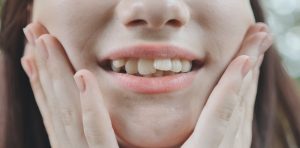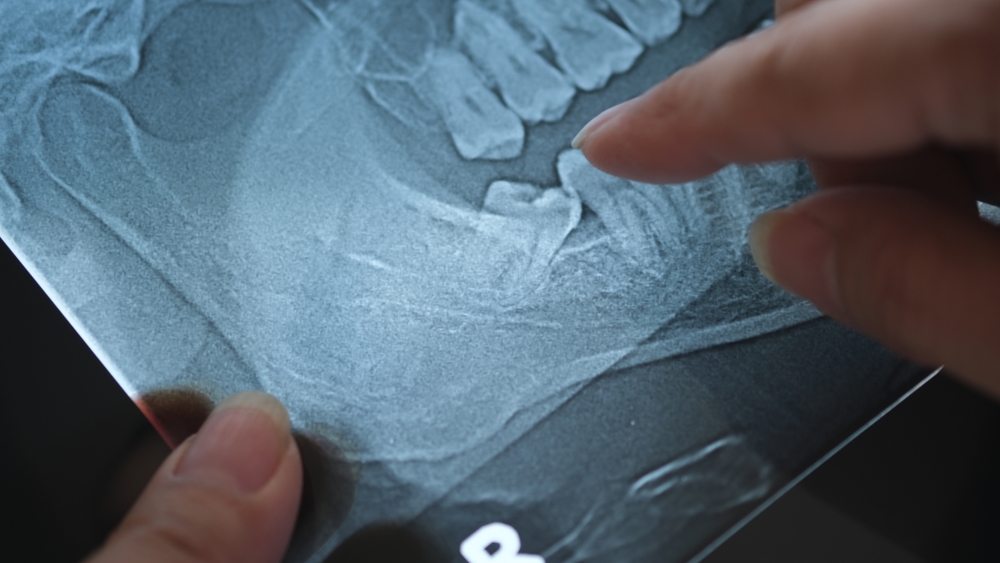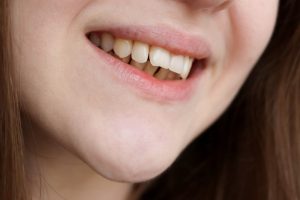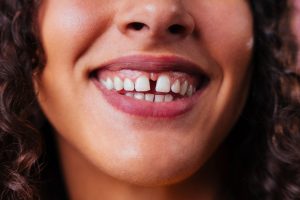
Dentleon İzmir Bornova, Çiğli, Güzelbahçe, Bayraklı Özel Diş Kliniği
What is an Impacted Tooth? How is Impacted Tooth Treatment Done?
24 July 2025

What is an Impacted Tooth? How is Impacted Tooth Treatment Done?
Impacted teeth are teeth that cannot find their natural way out due to a narrow jaw structure or an imbalance in the position of the teeth, and therefore remain trapped within the gum or jawbone. Normally, teeth break through the gum tissue to erupt into the mouth. However, with impacted teeth, this process is incomplete; the tooth may erupt partially or completely beneath the gum and bone.
The most commonly impacted teeth are wisdom teeth, also known as third molars. This is due to insufficient space at the back of the jaw for these teeth to be positioned. A small jaw, irregularities in tooth alignment, or genetic factors can prevent the teeth from emerging properly.
Impacted teeth not only pose an aesthetic problem, but can also lead to serious health problems such as gum inflammation, jaw pain, displacement of neighboring teeth, and pressure-related damage to the roots. Professional jaw care should be initiated, especially if symptoms such as bad breath, pain when chewing, or recurring gum swelling are present.
If left untreated, impacted teeth can lead to further complications, such as cyst formation or bone deterioration. Therefore, regular dental checkups are crucial for early detection of impacted teeth and appropriate treatment planning.
What is an Impacted Tooth?
An impacted tooth is a tooth that fails to erupt in its proper position due to a failure to complete its normal development process and remains partially or completely embedded in the gum or jawbone. While most commonly seen in wisdom teeth, canines or other molars can also become impacted.
Impacted teeth can cause a variety of oral problems. Gum inflammation, jaw joint pain, difficulty chewing, and tooth displacement due to pressure on adjacent teeth are among the most common problems. Furthermore, because impacted teeth are not visible in the mouth, they can go unnoticed, which can lead to more serious complications later on if left undiagnosed.
Therefore, it is very important to detect impacted teeth early during routine dentist check-ups and to make an appropriate treatment plan.
What are the Types of Impacted Teeth?
Impacted teeth are categorized into different types based on their location and the extent of their emergence. This classification plays a significant role in determining the treatment method.
Fully Impacted Tooth
Completely impacted teeth are teeth that are completely hidden beneath the gum and jawbone tissue, invisible within the mouth. These types of teeth are usually detected through X-rays. Completely impacted teeth can put pressure on surrounding teeth in the long term, leading to cyst formation or jawbone deterioration. Therefore, surgical removal is often necessary.
Partially (Half) Impacted Tooth
Partially or partially impacted teeth are characterized by a portion of the tooth remaining visible within the mouth, while the remaining portion remains beneath the gum tissue. Partially impacted teeth, due to poor oral hygiene, allow food debris and bacteria to accumulate easily. This can lead to gingivitis, bad breath, and, over time, more serious infections. Furthermore, partially impacted teeth often present with recurring swelling and pain.
Impacted wisdom tooth
The most common type of impacted teeth are wisdom teeth. These teeth, typically located at the very back of the jaw, cannot erupt properly due to insufficient space. Wisdom teeth that emerge at an incorrect angle or remain completely impacted can cause problems such as jaw joint pain, cheek and gum irritation, and even displacement of adjacent teeth. In most cases, surgical extraction is recommended.
What are the symptoms of an impacted tooth?
Impacted teeth may not always cause symptoms. However, the following are common:
– Pain in the jaw and gums
– Swelling or redness in the gums
– Difficulty opening the mouth
– Bad breath
– Jaw shifting or misalignment of other teeth
. If you experience any of these symptoms, it’s essential to see a dentist.
What are the causes of impacted teeth?
- Small jaw structure
- Disorders in tooth alignment
- Wrong direction of tooth eruption
- Late loss of milk teeth
- Hereditary factors
The causes of impacted teeth vary from person to person. Specialist specialists such as orthodontics or jaw surgery may be helpful in examining your jaw structure.
How is Impacted Tooth Extraction and Treatment Done?
Impacted tooth extraction is a surgical procedure usually performed under local anesthesia. The procedure involves the following steps:
1. Anesthetizing the area
. 2. Opening the gum with a small incision
. 3. Removing the tooth by breaking it into small pieces, if necessary.
4. Stitching and beginning the healing process.
Extractions of impacted wisdom teeth, in particular, should be performed by an experienced oral surgeon. This procedure prevents more serious dental and jaw problems in the future.
Things to Consider After Impacted Tooth Extraction
- Avoid hot food and drinks for the first 24 hours
- Do not force the operation area with hard objects.
- Use the prescribed medications regularly
- Avoid spitting and drinking with a straw for the first day.
- Continue regular dental checkups
Should an Impacted Tooth Always Be Extracted?
Not every impacted tooth needs to be extracted. However, if it is causing pain, infection, or displacement of other teeth, extraction is recommended.
At What Age Should an Impacted Tooth Be Extracted?
The most suitable period is generally between the ages of 17 and 25. During this age range, bone structure is more flexible and healing is faster.
How Long Does Pain Last After Impacted Tooth Extraction?
Mild pain and swelling are normal for the first 1-3 days. This can be easily managed with painkillers and ice packs prescribed by your doctor.
Will an Impacted Tooth Grow Again?
After an impacted tooth is extracted, the same tooth will not grow back. However, similar problems may occur in other teeth.
What to Eat After Impacted Tooth Surgery?
Soft, warm foods are recommended for the first day. Yogurt, soup, puree, and ice cream are good options.
Conclusion:
Impacted teeth are a problem that can seriously impact oral and dental health. With early diagnosis and proper treatment, this process can be easily managed. If you have symptoms of impacted teeth, contact our Dent Leon expert team for a detailed examination and jaw treatment plan.
Recent Posts



